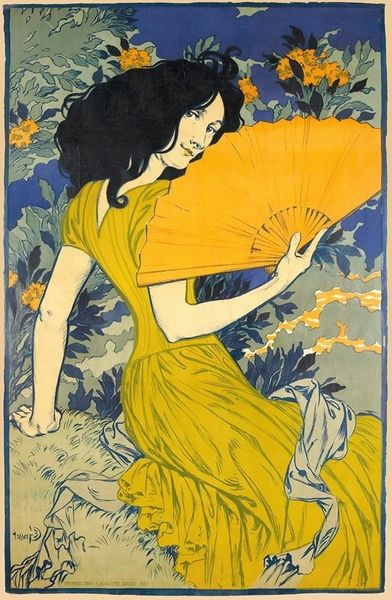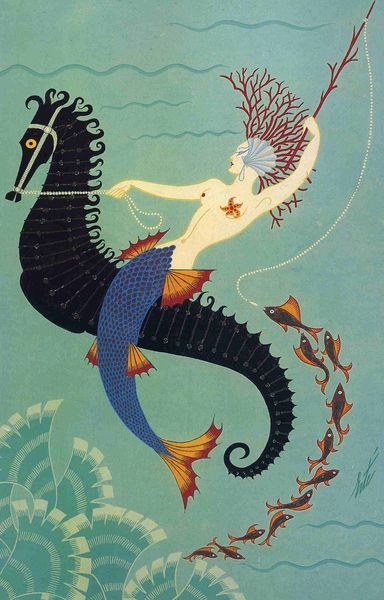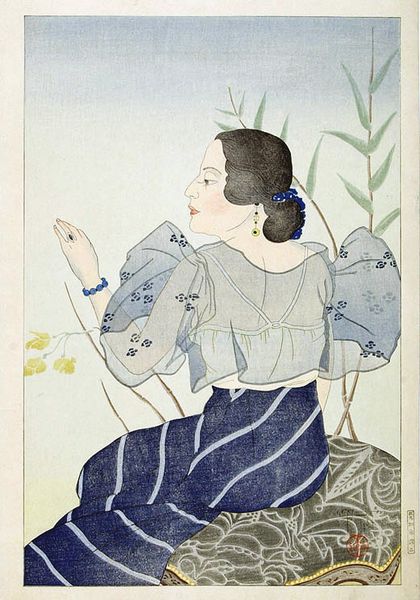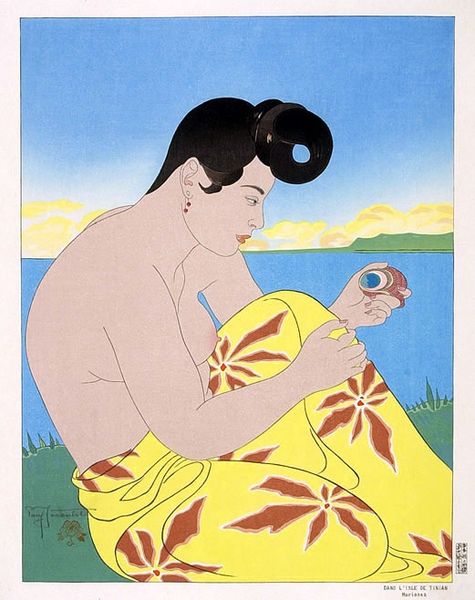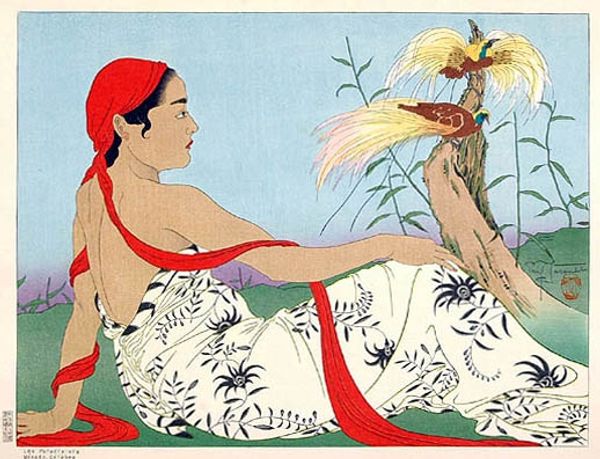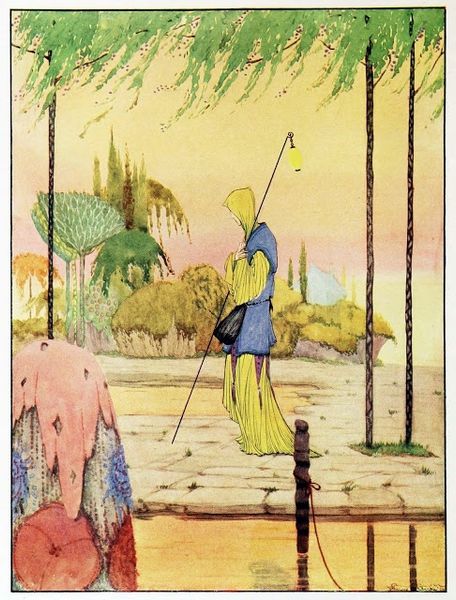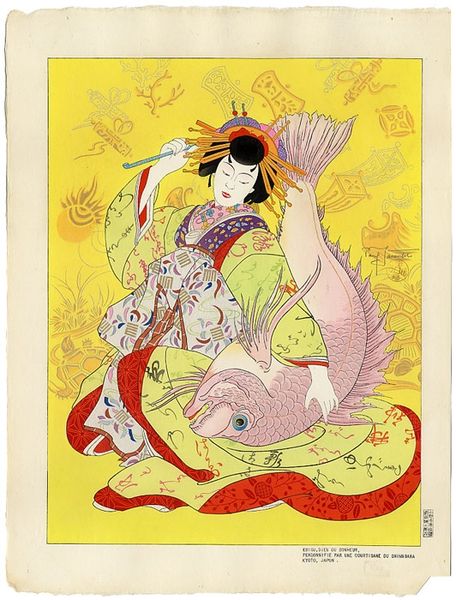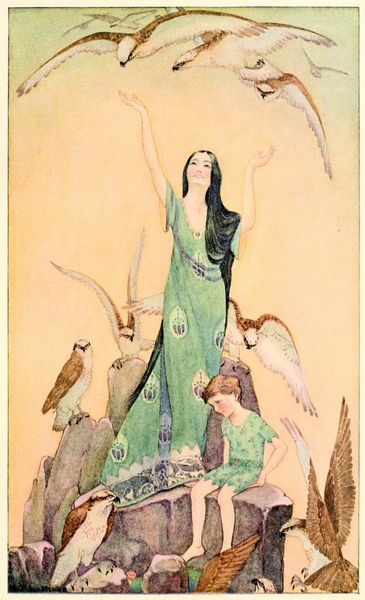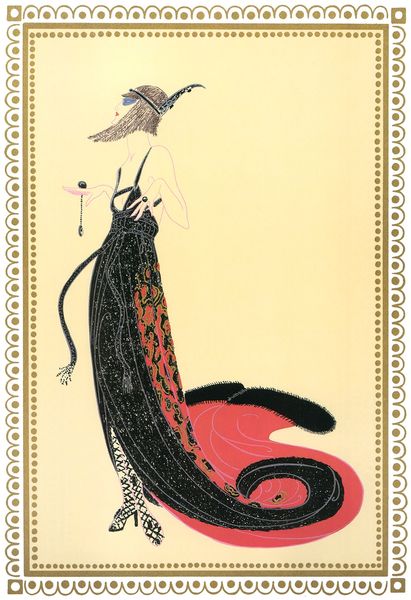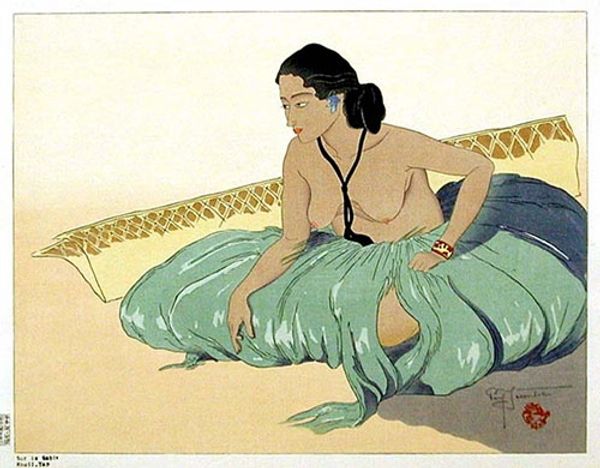
Copyright: Public domain Japan
Editor: This is "La Tresseuse De Paniers. Remoue, Yap," a 1948 woodcut print by Paul Jacoulet. It depicts a woman weaving a large structure that looks almost like a seed pod. The detail in the woven texture contrasts with the flatter landscape, which seems so… idyllic. What stands out to you when you look at this work? Curator: Immediately, the stylized presentation catches my attention, especially in how Jacoulet emphasizes the labour involved in basket weaving, even turning the baskets into oversized iconic objects. Consider the materials: woodcut lends itself to repetitive marks, mirroring the repetitive hand motions integral to basketry. What do you make of Jacoulet using this medium for depicting a Yapese woman? Editor: It feels a little… complicated. There’s this beautiful rendering of her craft, but also the possible lens of Orientalism, maybe reducing her work to just exotic imagery. Curator: Precisely. Note how the process of making the woodcut itself—the carving, the inking, the pressing—becomes a parallel to the woman’s weaving. Jacoulet’s labor mirrors hers. Isn't it fair to ask, whose perspective dominates? Is it truly about representing her culture, or more about Jacoulet's own artistic enterprise? Editor: That's a great point! Thinking about it as Jacoulet’s labour echoing the woman’s… the print then also becomes about the economics and commodification of art and culture, right? He's making something beautiful, but it’s also a product to be consumed. Curator: Exactly. We must ask what is being traded, who benefits, and how cultural practices are represented through the act of artistic creation and subsequent consumption. The "basket" then also functions as a material object – that is now for a cultural exchange, no longer practical necessity. Editor: I’d never considered the materiality of printmaking as a kind of parallel labour before. It really shifts how I see this image. Curator: It’s a productive reminder that every artwork is the product of specific processes and material conditions that should be carefully considered in an analysis of art objects and art making.
Comments
No comments
Be the first to comment and join the conversation on the ultimate creative platform.

